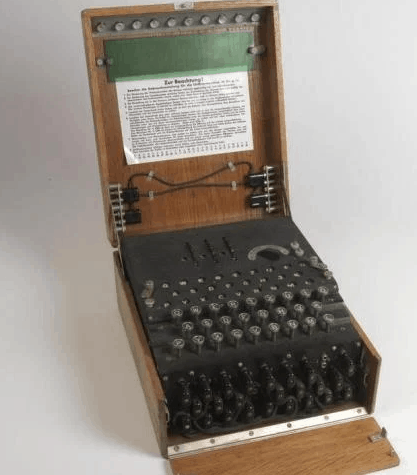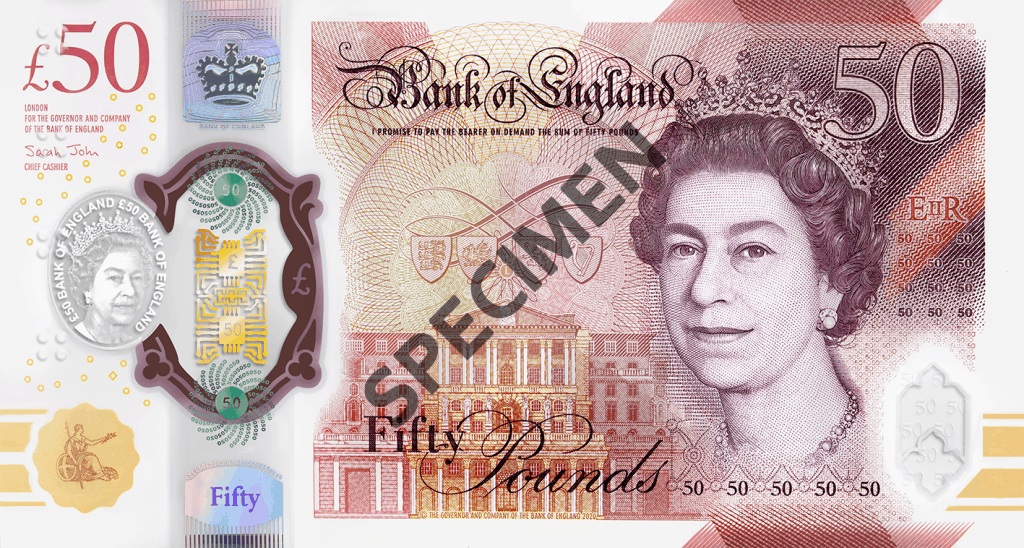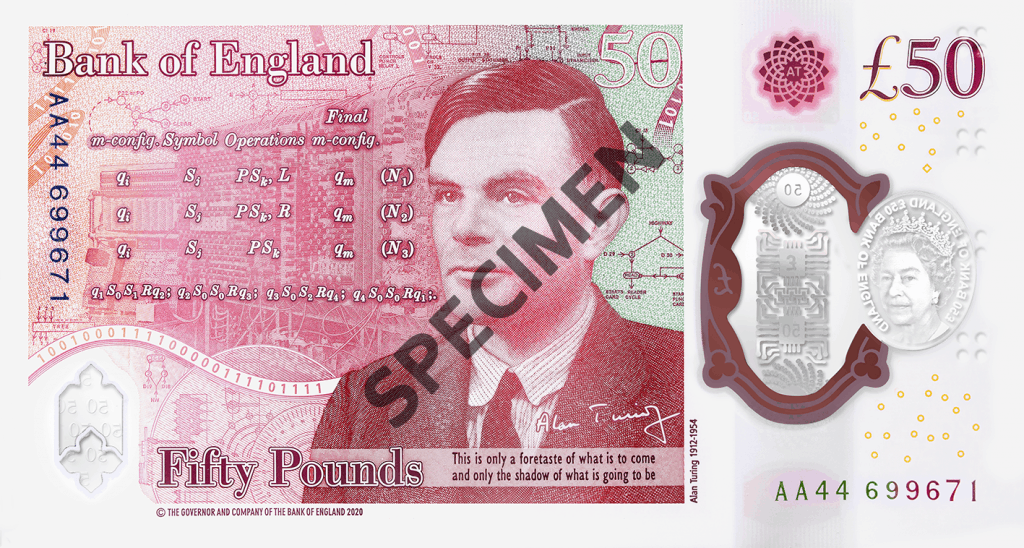The new £50 banknote was officially unveiled by Bank of England Governor, Andrew Bailey on 25 March 2021 and features the scientist Alan Turing. However, it didn’t come into general circulation until 23 June 2021, a significant date, as it is Alan Turing’s birthday. It now means that all Bank of England banknotes are available in a polymer form and this new note joins its predecessors, the £5 featuring Winston Churchill, the £10 note with Jane Austen and £20 note displaying JMW Turner. This new note will be very hard to counterfeit making it one of the most secure series of banknotes ever made. An interesting fact is that the higher the value of the note, the larger it is and the new £50 note measures 146mm x 77mm.
What should retailers know about the new £50 note?
- Both the new polymer and paper notes should continue to be accepted until 30 September 2022.
- The former £50 paper notes will be taken out of circulation gradually as they are banked by retailers and the public
- Staff should be trained on how to spot the differences between real and counterfeit notes
- A few of the advanced security features should be checked when staff determine if a note is real or counterfeit
- Staff should know what to do if they suspect a note is counterfeit
- The Bank of England website has information and free downloadable education materials about the banknotes
- Engage with banknote machine suppliers to ensure note accepting or dispensing machines will be updated
- Join the Banknote Checking Scheme
Image source: The Bank of England
What are the features of a polymer banknote?
- Allows for enhanced security features making them harder to counterfeit
- Stronger (not indestructible) notes and expected to last 2½ x longer than paper notes
- More environmentally friendly as they last longer – carbon footprint is 16% lower than paper notes and can be recycled
- Cleaner notes – smooth surfaces make them more resistant to dirt and moisture
- Can withstand extreme temperatures
In a nutshell, notes made from polymer are more durable, hygienic and secure.
What are the security features of the new £50 note?
The following security features can be found on the note:
- Hologram – the word changes between ‘Fifty’ and ‘Pounds’
- See-through windows
- The Queen’s portrait in the see-through window
- A silver foil patch has a 3D image of the coronation crown
- Metallic, red foil patch with the letters ‘AT’
- Raised print and print quality
- Ultraviolet number ‘50’
It is also interesting that on the front of the note there are four clusters of raised dots in the top left hand corner. These are a tactile feature to help blind and partially sighted people identify the value of the note.
How do I check whether the new £50 note is counterfeit?
The polymer £50 note contains advanced security features that can be checked to help confirm that the note you have received is genuine.
- Tilt the note from side to side to check the word changes between ‘Fifty’ and ‘Pounds’
- Look at the metallic image over the main window and check the foil is gold and green on the front of the note and silver on the back
- Within the two gold squares on the front, when tilted the image changes between ‘50’ and a ‘£’
- The queen’s portrait is printed on the window with ‘£50 Bank of England’ printed 2x around the edge
- Above the main see-through window on the front is a silver foil patch containing the coronation crown
- The red foil patch is on the back directly behind the silver crown on the front
- Feel of polymer and raised print on the words ’Bank of England’ and in the bottom right corner over the small window
- Printed lines are sharp, clear and free from smudges or blurred edges
- Under an ultraviolet light, the number ‘50’ appears on the front in bright red and green
When does the old paper £50 note go out of circulation?
The old paper £50 note goes out of circulation on 30 September 2022. Old paper £20 notes will also be withdrawn from circulation on the same day.
Banknotes don’t just hold economic value; there is a cultural value as well
The Bank of England has been issuing banknotes for over 300 years and during that time the way notes have been printed has changed a lot. Currently there are four denominations in circulation, £5, £10, £20 and £50. Banknotes need to fit the criteria of being high quality, long-lasting and difficult to forge and the transition to printing notes on polymer fulfils all three. Today there are 4.5 billion Bank of England notes in circulation, worth a total of approx. £80 billion. The governor of the Bank of England, Mark Carney, stated that banknotes are much more than a practical necessity: “They can be a piece of art in everyone’s pocket. Banknotes are a celebration of the UK’s heritage, a salute to its culture, a testament to its great achievements, including those of its notable citizens.”
Who is the face on the new £50 note?
All British banknotes feature a famous person and for the £50 note, it is mathematician Alan Turing. His identity was revealed in July 2019 with the Banknote Character Advisory Committee choosing to celebrate the field of science on the £50 note. The design on the reverse of the note celebrates Alan Turing and his pioneering work with computers. Included features are a mathematical table and formulae, the Automatic Computing Engine (ACE), technical drawings from British Bombe and images depicting technical drawings from The ACE Progress Report.
- The quote on the note reads, “This is only a foretaste of what is to come and only the shadow of what is going to be”
- The signature is taken from the visitor’s signature book on display at Bletchley Park Trust in 1947, where Alan Turing worked during WWII
The current paper £50 note features entrepreneur Matthew Boulton and the engineer James Watt.
Who is Alan Turing?
Alan Turing (23 June 1912 – 7 June 1954) was a scientist who was best known for his code-breaking work at Bletchley Park, which helped to end WWII. Turing was instrumental in breaking the German Enigma code, which led to the Allied victory.

Image source: Imperial War Museum
He was recognised as a genius at the age of 9 and went on to study mathematics at King’s College, University of Cambridge in 1931 and graduated in 1934 with a first-class honours degree, later obtaining his PhD at Princeton University, New Jersey. It was here that he developed the notion of a ‘universal computing machine’, which could solve complex calculations. This would become known as the Turing machine, which foreshadowed the digital computer. His legacy continues to impact both science and society today.





